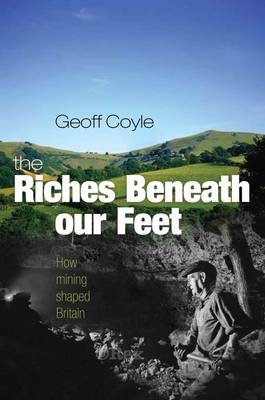
The Riches Beneath Our Feet: How Mining Shaped Britian
Oxford University Press (Verlag)
978-0-19-955129-3 (ISBN)
- Titel ist leider vergriffen;
keine Neuauflage - Artikel merken
Britain's mining and quarrying industries date back to the Stone Age flint mines of 2500 BC and still exist. In that period of more than 4,000 years the country's miners have produced colossal amounts of copper, tin, lead, zinc, iron, a lot of silver and some gold, and smaller amounts of just about every other metal from arsenic to uranium. The metals were the foundation of our industrial wealth and ease of living but they were driven by King Coal, which at its peak employed a million men and produced more than 200 million tons a year. Granite from Scotland, limestone from Southern England, sandstone and Welsh slate provided our homes, factories, roads and harbours. None of this could have been achieved without the genius of engineers such as James Watt, and the invention of powerful steam engines and many other technical advances. Our good fortune in this cornucopia of wealth derives from the Island's astonishing geological history: what is now Southern England was once on the Antarctic Circle. Professor Geoff Coyle, a former mining engineer and from a mining family himself, sketches the story of how mining has shaped Britain.
The account is wide ranging, involving stories of the mineral wealth of Britain and its expliotation, from simple quarrying to the advent of mass production. There are tales of the miners' lives and the great mining families, as well as accounts of the miner's work, the conditions in the mines, and mining disasters. Coyle weaves his personal experience and passion into the story, illuminating the industrial history, geology, and technology. Each chapter highlights one of the main mining fields and explores the mineral in question, its exploitation, and how technological changes affected the mining techniques used.
Geoff Coyle graduated in mining engineering from the Royal School of Mines, Imperial College, University of London. He has worked underground in coal and copper mines, and qualified as a practical coal-face worker. The contraction of the coal industry led him to develop an alternative career, and after working for Imperial Chemical Industries, he became a management academic. He is now retired and a freelance academic and consultant. In writing this book he returns to his first love - the fascination of mining.
PREFACE ; 1. The Achievements of Britain's Miners ; 2. Britain's Geology and Minerals ; 3. Britain's Copper and Tin Mining ; 4. Power to the Miner's Elbow ; 5. From Castle Roofs to Organ Pipes: The Lead and Zinc Mines ; 6. King Coal: Britain's Powerhouse ; 7. Building Britain: Granite, Stone, and Slate ; 8. The Salts of the Earth ; 9. Iron and Steel: The Sinews of Industry ; 10. The Riches of the Earth: Britain's Gold, Silver, and Precious Stones ; 11. Accidents and Disasters: The Price Miners Paid ; 12. Lords and Adventurers: The Mine Owners ; 13. The Mining People and their Communities ; 14. Epitaph or Revival? The Possibilities for Britain's Mining Industries ; APPENDIX: THE MAIN BRITISH MINERALS ; BIBLIOGRAPHY
| Erscheint lt. Verlag | 16.4.2010 |
|---|---|
| Zusatzinfo | 30 black and white photographs and illustrations |
| Verlagsort | Oxford |
| Sprache | englisch |
| Gewicht | 612 g |
| Themenwelt | Sachbuch/Ratgeber ► Natur / Technik |
| Geschichte ► Teilgebiete der Geschichte ► Kulturgeschichte | |
| Geschichte ► Teilgebiete der Geschichte ► Wirtschaftsgeschichte | |
| Technik ► Elektrotechnik / Energietechnik | |
| ISBN-10 | 0-19-955129-4 / 0199551294 |
| ISBN-13 | 978-0-19-955129-3 / 9780199551293 |
| Zustand | Neuware |
| Haben Sie eine Frage zum Produkt? |
aus dem Bereich


